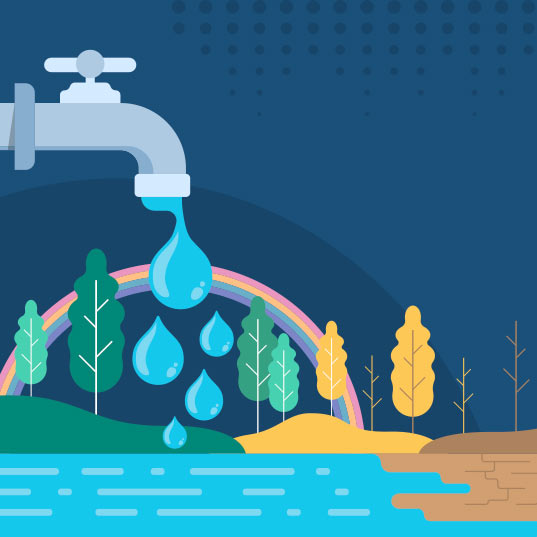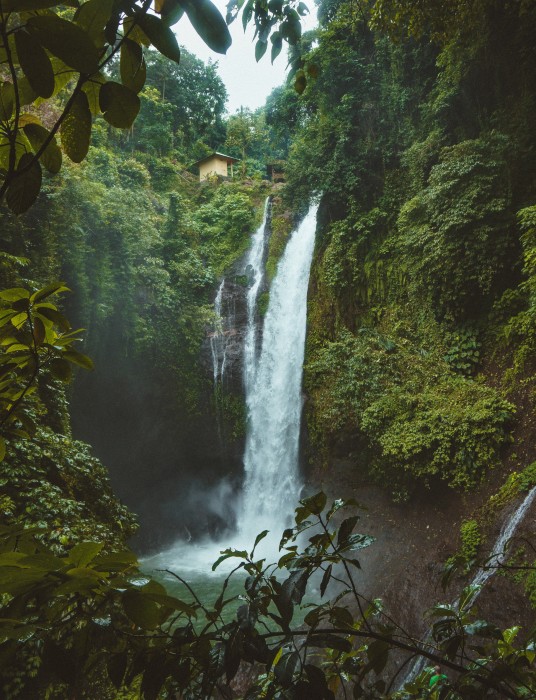The month of March 2024 will always be remembered in the history of water sustainability as the moment at which the first UN Water Conference in half a century was held. A conference focused on coming up with solutions to protect, sustainably manage, and assure universal access to water. What did it achieve? We tell you the details below.
What will I learn from this article?
How the UN Water Conference went
 In the same way that carbon is a story of mitigation, water is a story of adaptation. Among the pollution, droughts and climate change – not to mention growing demographic pressure and consumer demand – the risks to which we are subjecting this resource continue to increase.
In the same way that carbon is a story of mitigation, water is a story of adaptation. Among the pollution, droughts and climate change – not to mention growing demographic pressure and consumer demand – the risks to which we are subjecting this resource continue to increase.
To try to find a solution, world leaders, civil society, corporations, and other interested parties met at the United Nations 2023 Water Conference held from 22 to 24 March at UN headquarters in New York.
The goal was clear: to assume ambitious commitments to tackle the global water crisis. The session, which coincided with World Water Day, was defined by the UN Secretary-General Antonio Guterres as “a crucial moment for national governments, local and regional authorities, companies, scientists, young people, civil society organizations and communities to join forces to design joint solutions destined to obtain clean water and sanitation for everyone, and invest in them.”
The Water Action Agenda, the plan for solving water problems
Water is a decisive factor for the Sustainable Development Goals and the health and prosperity of people and the planet. Progress on the objectives, however, and goals related to this resource can improve considerably.
Water demand is forecast to exceed supply by around 40% by the end of the decade. The climate crisis is also the water crisis. Changes in the hydrological cycle, rises in the sea level, climate catastrophes related to water – increasingly more intense and common – and water scarcity are just some of the consequences. Droughts, melting of ice, floods, intense rainfall, etc., are others. Global warming leaves highly visibly proof in its wake and it is easy to perceive how climate change affects the water cycle.
“Water demand is forecast to exceed supply by around 40% by the end of the decade”
 Pollution also plays a decisive role in the scarcity of this resource. It is estimated that there are currently 3.6 billion people in the world living in areas of water scarcity for at least one month a year. According to the United Nations World Water Development Report, by 2050 this figure may have reached 4.8 to 5.7 billion.
Pollution also plays a decisive role in the scarcity of this resource. It is estimated that there are currently 3.6 billion people in the world living in areas of water scarcity for at least one month a year. According to the United Nations World Water Development Report, by 2050 this figure may have reached 4.8 to 5.7 billion.
Mr. Guterres highlighted four measures that should be taken to assure universal access to water:
- Effective public policies and intergovernmental collaboration.
- Massive investment in water and sanitation systems.
- Guaranteed resilience of water-related infrastructure.
- Support for innovative solutions promoting the conservation of the environment and water protection.
So, what did this translate into at the UN Water Conference? Into the Water Action Agenda. This is a plan that will try both to boost a set of actions with a future vision, such as the development of new, alternative, food systems to reduce the unsustainable use of water in agriculture, while launching a new global information system to guide plans and priorities to achieve the SDGs.
Of course, financing is an important part of the plan. General Assembly President Csaba Kőrösi said that USD 300 billion of funding promised to drive the transformative Water Action Agenda had the potential to unblock at least 1 trillion dollars in socioeconomic and ecosystem gains.
The result of this conference was not a legally-binding document, but it still turned a page in history by calling on governments and organizations across the world to move to action to protect water.
Sources: